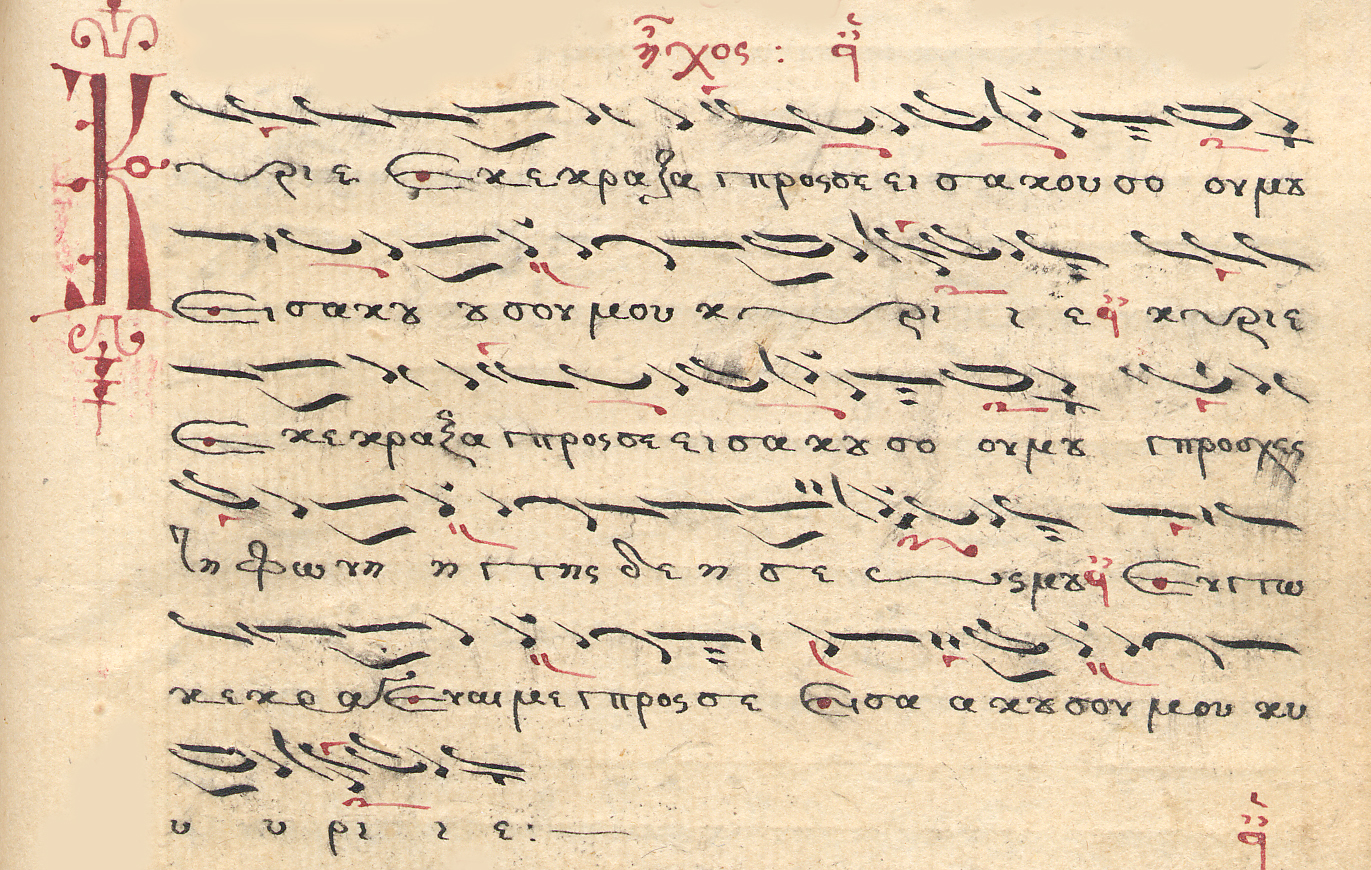The Anastasimatarion of Petros Peloponnesios is a book containing the most common set of melodies used in 'Byzantine' Orthodox Churches for Saturday night vespers/Sunday morning orthros in the eight tones. The new sticheraric is the melos most commonly used in parish churches for 'Lord I have cried,' Doxastica, 'Let every breath', etc. These melodies came into use around the time of the American Revolutionary War. There are abridged versions (sort of) of the melodies. Here's an example of what it looked like:§.402. These species of psalmody are reduced to four genera of melos: the old Sticheraric, the new Sticheraric, the Papadic and the Heirmologic. ...§.403. The new sticheraric melos is the one found in the Anastasimatarion by Petros the Peloponnesian. On this melos are chanted doxastika, stichera, anastasima, exaposteilaria, ænoi, prosomœa, idiomela, heothina, kathismata, antiphona and eisodika.
Lord I have cried, First Tone
On to the video:
I wish the whole thing had gotten recorded. But this is the anoixandaria chanted at the patronal feast of Holy Cross seminary by the seminarians (and teachers) alternating Greek and English. The anoixandaria is an adaptation of the second half of the "proemiakon" of vespers (psalm 103 that we normally read at the beginning). The bishop has already read the verses of the psalm until right before "when thou openest thy hand, they are filled with good things." The video is trained on the "left" choir. The Lambadarios (i.e. the leader of the left side) is Rassem el-Massih, Protopsaltis of the Antiochian Archdiocese.
- This is the anoixandaria at the beginning of great vespers.
- They're singing in the new sticheraric melos (2-4 beats per syllable).
- The setting they're using is in Plagal Fourth Tone (sometimes called 'Tone 8').
- The setting they're using is attributed to Phokaeus (but he merely published it).
- This piece changes tones as it goes along, so beware! But, as is normal for plagal fourth tone, each verse ends on Νη (C, more or less)
- The two choirs, right and left, are chanting antiphonally. This is the authentic tradition presupposed by Orthodox liturgical books.

No comments:
Post a Comment